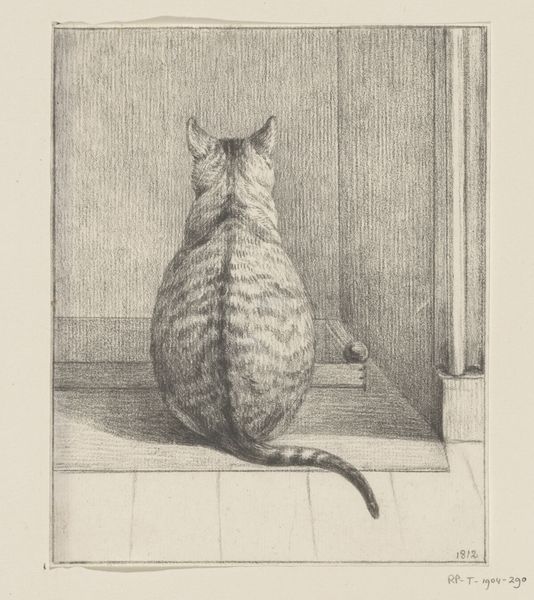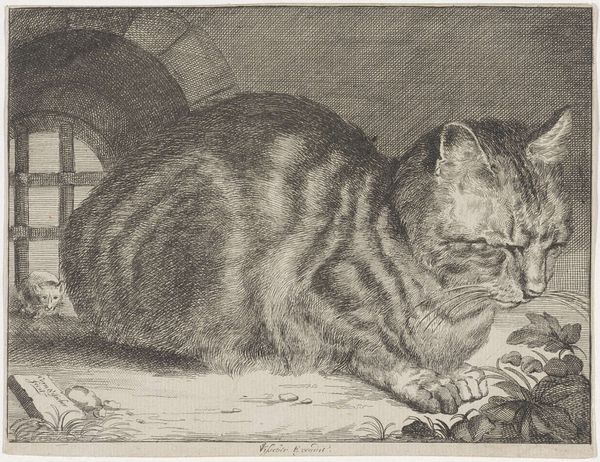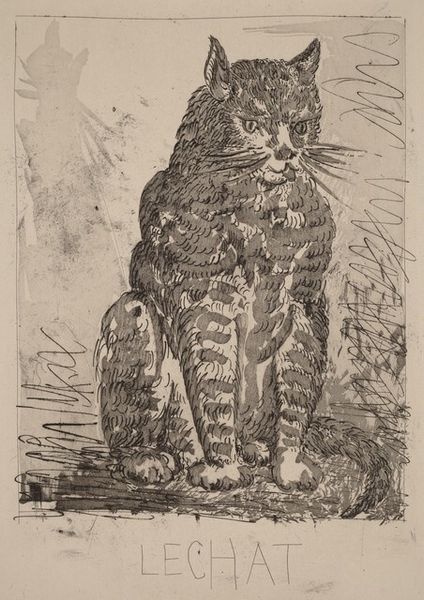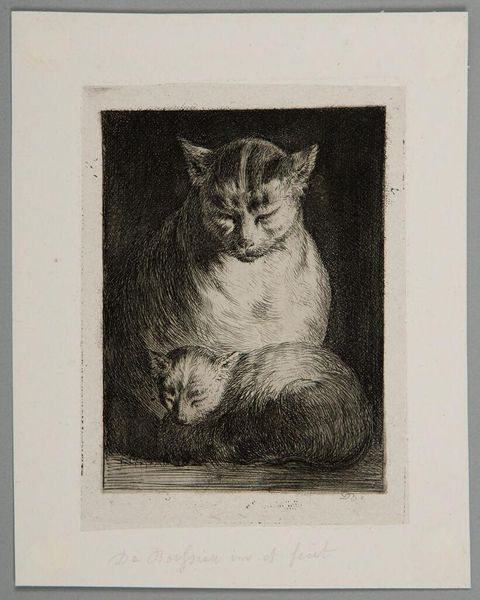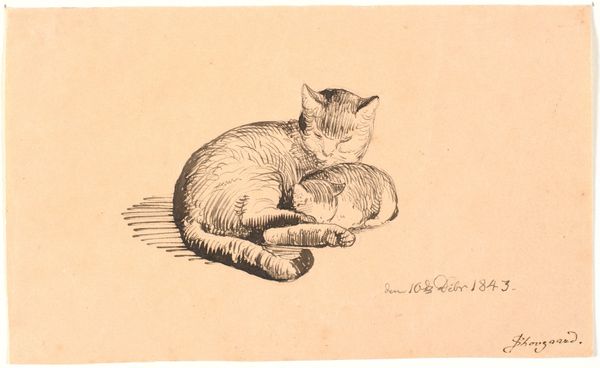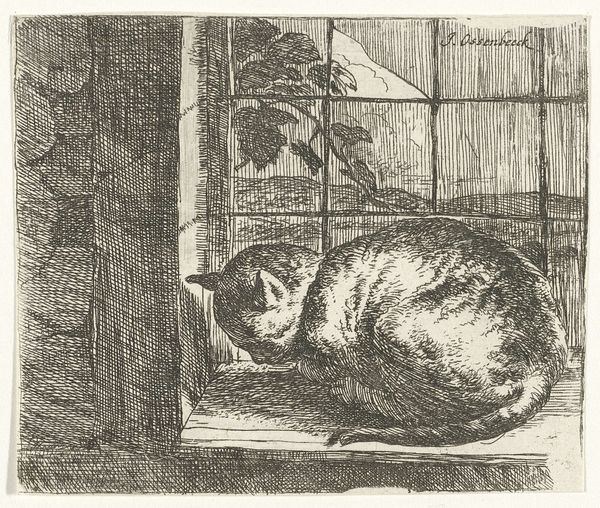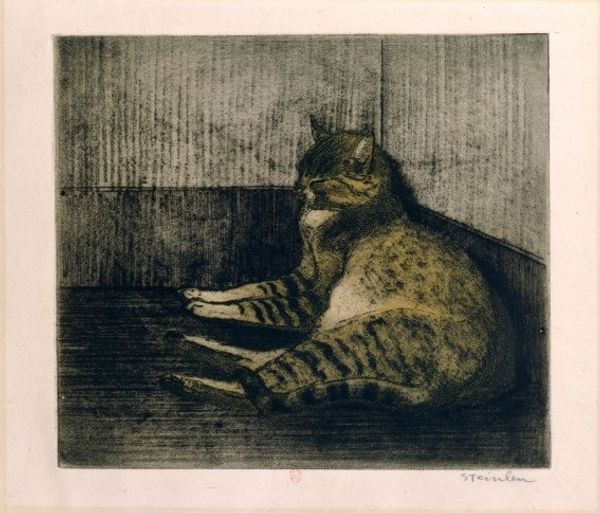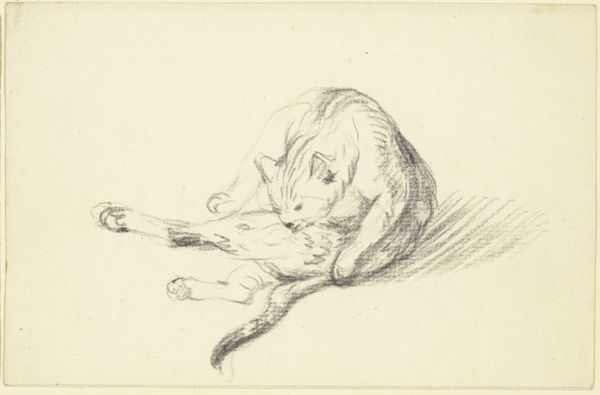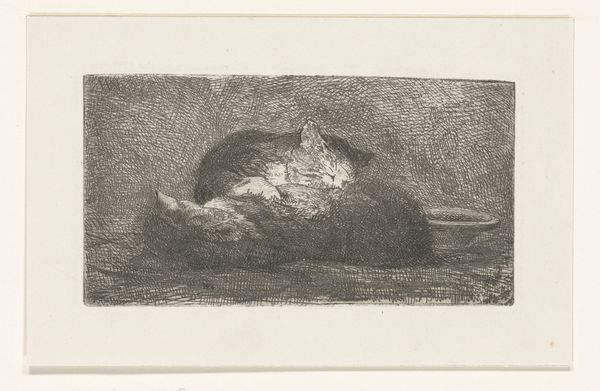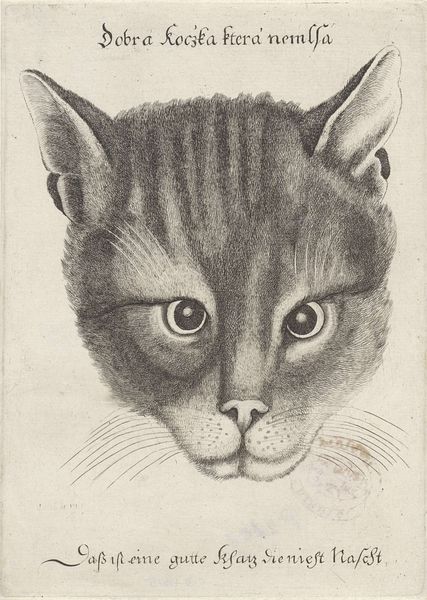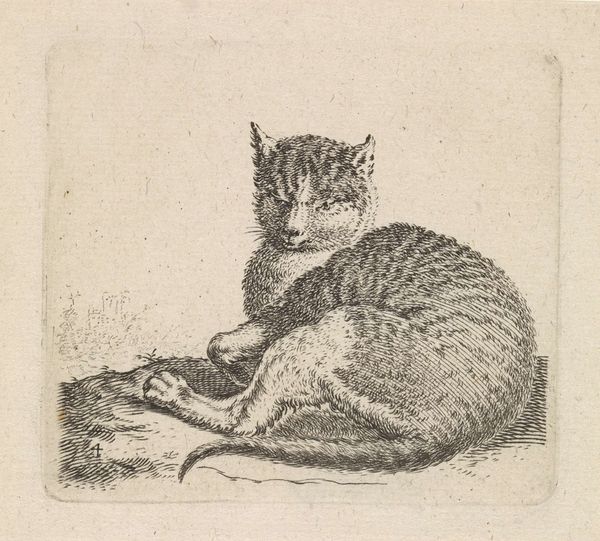
drawing, pencil
#
drawing
#
caricature
#
pencil sketch
#
dog
#
old engraving style
#
pencil drawing
#
romanticism
#
pencil
#
portrait drawing
#
genre-painting
Dimensions: height 349 mm, width 260 mm
Copyright: Rijks Museum: Open Domain
Curator: Allow me to introduce you to "Spotprent op Talleyrand en Palmerston, 1832," a drawing, likely from 1832, by John Doyle, held here at the Rijksmuseum. Editor: My immediate thought? Mischief! The rendering feels theatrical. All those nervous pencil strokes create such an uncanny and unnerving atmosphere. What's this story unfolding here? Curator: Doyle has crafted a clever caricature here. The piece implicates French diplomat Talleyrand, and British Foreign Secretary Palmerston in a shared goal, by representing Palmerston as a monkey using Talleyrand in the guise of a feline "cat's paw." See how he moves the coals marked “Belgium” and “Antwerp” away from Holland? It suggests manipulation of resources— pawns in their political game. Editor: Yes, look at the raw process itself. The pencil sketchiness adds to the sense of political agitation and perhaps some backdoor dealing. The work lacks refinement. It highlights not just the result, but the labor behind the making. Doyle used pencil on paper for accessibility. Mass consumption of this critique! Curator: There’s a delightful absurdity to it, isn't there? This isn’t high-minded portraiture; Doyle opted for accessible visual rhetoric with an exaggerated doglike monkey. The cat is the victim! So wonderfully expressive in its distress. One cannot deny Doyle's skill in breathing life into the medium. Editor: The political turmoil becomes tangible in the material handling. It reflects on the exploitative use of materials and even people within international power dynamics. Look at that box labeled "Holland"! Everything's being extracted from the Dutch. Curator: Right, and the print underscores just how much political events become theatre, relying on symbolic stagecraft as much as concrete negotiations. The dark lines imply doom. It seems Palmerston is hiding his face. Are they shamed of their actions? Editor: In today’s language we could see those kind of actions as being performative. We call the actors puppets and tools of other powers. Curator: Indeed! I leave the observer to contemplate: What modern-day “cats paws” do we see at work in our own world? Editor: The genius here lies in the simplicity of the materials. A raw, unpretentious critique made for popular engagement. A powerful way to democratize political thought.
Comments
No comments
Be the first to comment and join the conversation on the ultimate creative platform.


